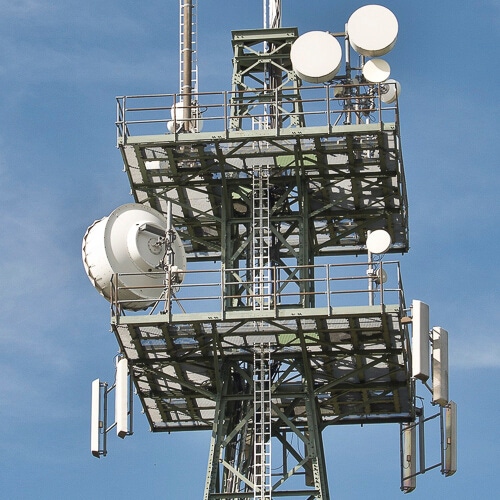What the 6GHz band might mean for FWA
Resound, Airspan, Nextlink, Cambium and other fixed wireless players are eagerly eyeing the 6GHz band, and it's possible that Verizon and T-Mobile could add the spectrum to their operations.

Fixed wireless access (FWA) technology is gaining significant interest in the US market, as evidenced by T-Mobile and Verizon collectively adding 816,000 new FWA customers during the second quarter of this year, while Charter Communications and Comcast collectively lost around 21,000 broadband customers.
Leichtman Research Group reported that, over the past year, the US broadband industry added a total of 3.3 million net broadband customers. Fully 56% of those subscribed to fixed wireless.
Much of the growth in FWA is due to the release of more midband spectrum for 5G. Such spectrum provides network operators with the capacity necessary to support home Internet traffic that can total 1TB or more per month.
But the FWA story in the US doesn't end with midband spectrum like C-band, 3.45GHz and 2.5GHz. Another growth vector could open up via the 6GHz band.
Another unlicensed option
"We're excited about 6GHz. It can't get here fast enough," Scott Imhoff, SVP of product management for equipment vendor Cambium, told Light Reading. He said the vast amount of mostly unused spectrum in the unlicensed 6GHz band ought to appeal to operators working in other, increasingly crowded unlicensed spectrum bands like 5GHz.
"I think you'll see a very rich customer base adopt the technology quite quickly," he said.
Figure 1:  (Source: Pixabay)
(Source: Pixabay)
Imhoff explained that Cambium is already selling indoor Wi-Fi equipment working in the 6GHz band to enterprise customers. He said the FCC's vote in 2020 to allocate the entire 6GHz band for unlicensed uses helped pave the way for that initial application.
However, the band is widely expected to support outdoor applications, including fixed wireless, when the FCC authorizes Automated Frequency Coordination (AFC) systems for 6GHz. Such systems are intended to coordinate 6GHz spectrum among multiple users, including existing 6GHz users that are already using the band for cell site backhaul or radio astronomy.
Imhoff said the FCC could approve initial AFC operations as early as the end of this year.
Not surprisingly, Cambium isn't the only vendor eyeing the opportunity to sell new equipment for a new spectrum band.
"It's garnering a lot of interest and end [user] demand," said Glenn Laxdal during Airspan's recent quarterly conference call, according to a Seeking Alpha transcript. Laxdal is a former Ericsson and Infinera executive who recently joined Airspan to help the company sell equipment to fixed wireless network operators and others.
Fixed wireless provider Resound Networks recently tested Airspan's 6GHz products and said it was able to provide 1 Gbit/s download and 500 Mbit/s upload speeds across distances up to 3 miles.
Nextlink Internet, Sail Internet, Bolt Internet and Speed of Light Broadband are among the fixed wireless providers that either have tested or plan to test Cambium's 6GHz equipment.
Interest from the big guys
Large wireless companies have also shown interest in 6GHz spectrum, although it's unclear how they might make use of it.
AT&T recently told the FCC it may want to test 5G NR-U technology working in the unlicensed 6GHz band. The company's request could signal the operator's interest in pushing 5G operations in its licensed spectrum into the unlicensed 6GHz spectrum band.
T-Mobile has also asked for FCC permission to test Wi-Fi and FWA in the 6GHz band, according to FierceWireless.
Like many other Internet providers, the big guys may see the 6GHz band as a way to improve indoor Wi-Fi networks, such as those inside their FWA customers' homes. But they also could use the spectrum to improve the performance of their FWA connections, including those from a cell tower to a user's home.
There is precedent for the use of unlicensed spectrum bands to improve services running in licensed spectrum bands. T-Mobile, Verizon and other operators currently use Licensed Assisted Access (LAA) technology to transmit 4G signals in the unlicensed 5GHz band. LAA essentially widens a wireless connection in licensed spectrum by adding additional unlicensed spectrum channels to the link.
6GHz past and future
To be clear, most 5G operators would prefer to have exclusive, licensed access to the 6GHz band. The GSMA trade group continues to urge global spectrum regulators to set aside at least part of the 6GHz band for licensed 5G operations.
"The global future of 5G is at risk," the GSMA wrote last year.
But it's unlikely that US regulators would backtrack on their decision to release the entire 6GHz band for unlicensed uses. So, operators and vendors in the US are now turning to AFC technology, which promises to support relatively high-power, uncluttered operations in the 6GHz band.
The US may not be the only country that moves forward with AFC in the 6GHz band. "AFC has the potential to enable a wide range of industrial and commercial use cases," wrote the CITC, Saudi Arabia's telecom regulator.
However, there's one final potential hiccup for 6GHz in the US. Current guidelines for federal funding appear to specifically exclude the sole use of unlicensed spectrum for services crossing the digital divide. That's important considering that the US government is allocating more than $40 billion for such services.
Related posts:
— Mike Dano, Editorial Director, 5G & Mobile Strategies, Light Reading | @mikeddano
About the Author(s)
You May Also Like












